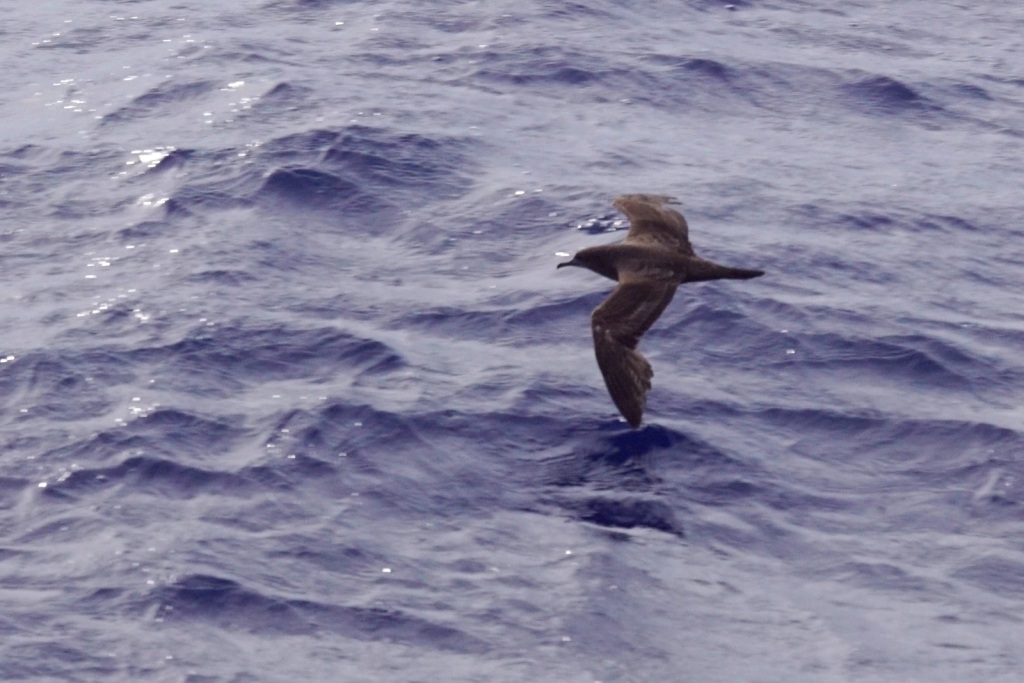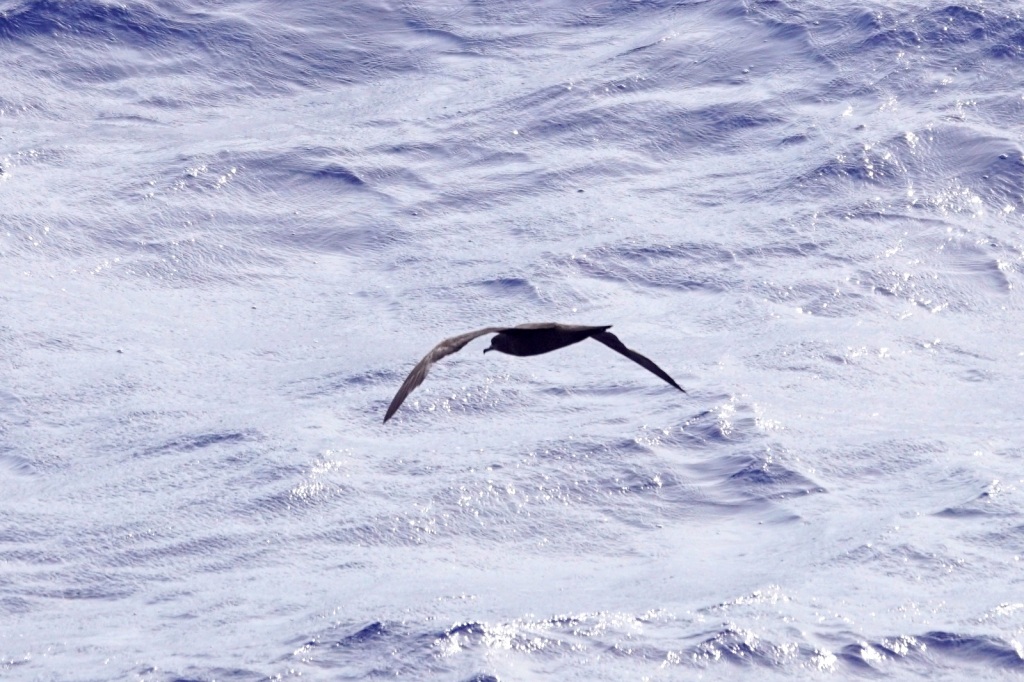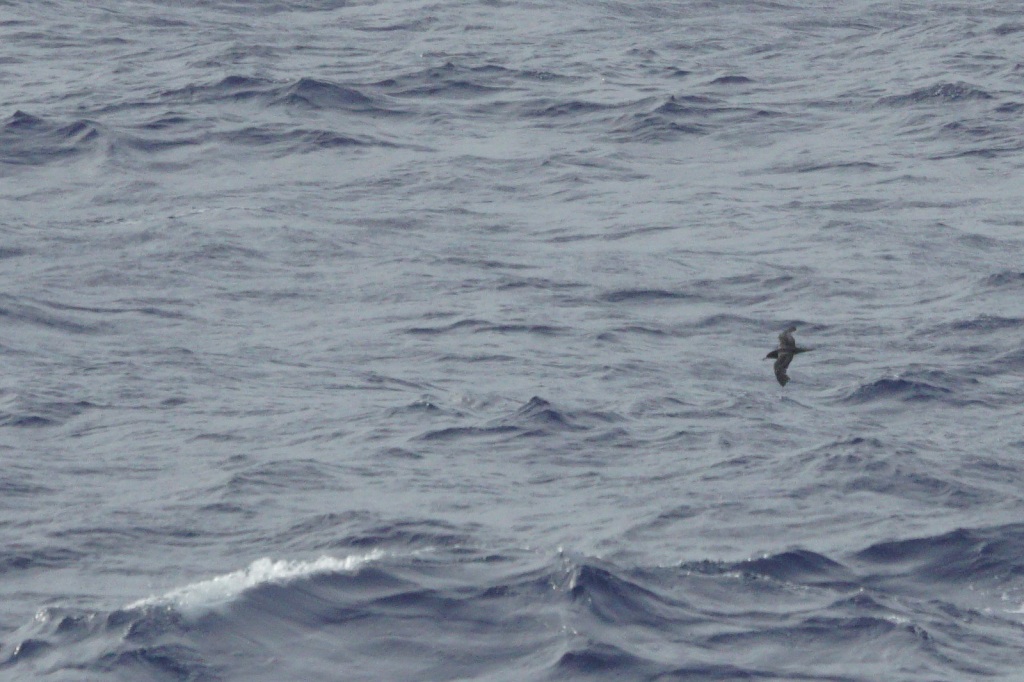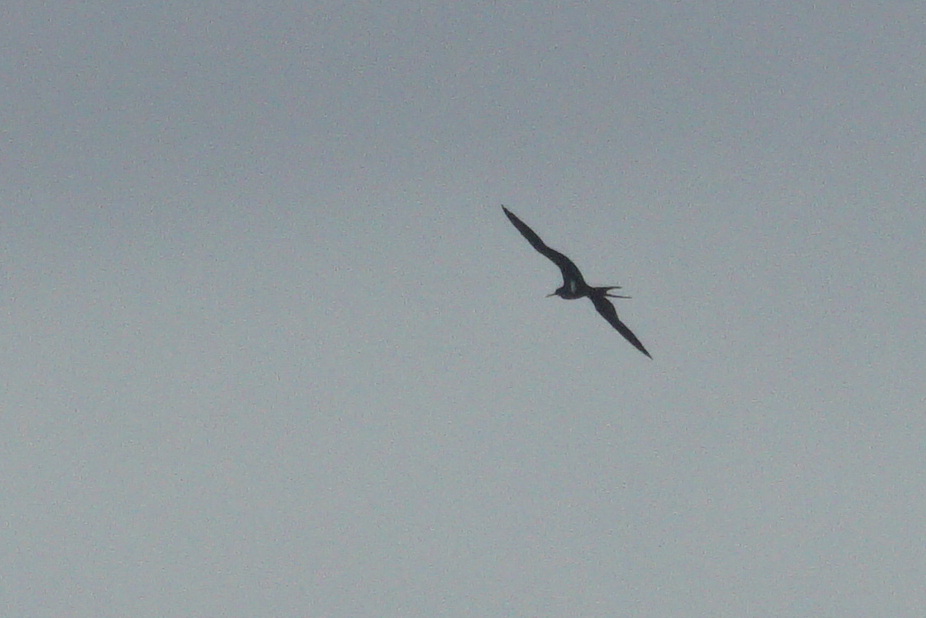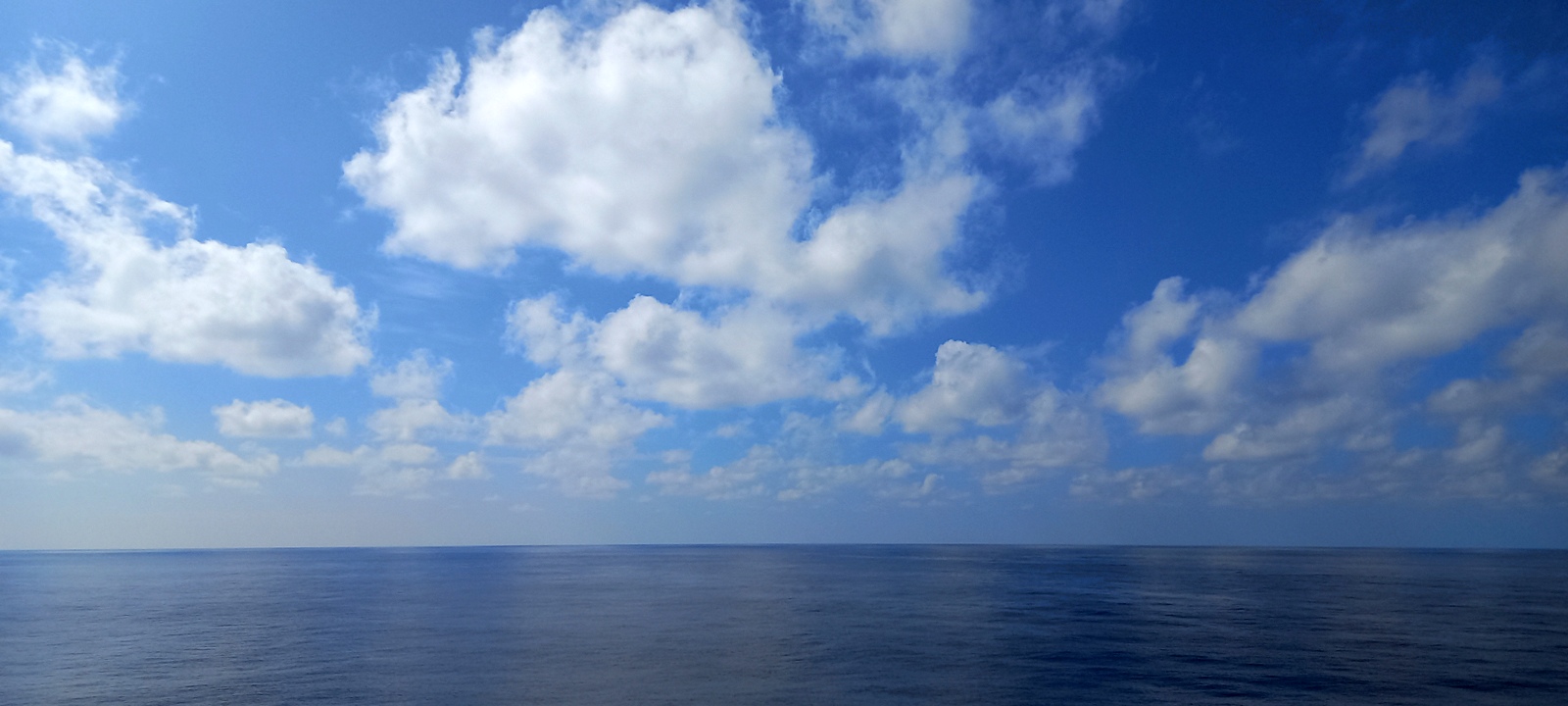On our initial itinerary, we would have paid a second visit to Malaysia on 19th March, with a call at Penang. This had to go once it was decided that the Red Sea was too dangerous to travel through, thanks to the actions by Houthi rebels in Yemen, who have been targeting Western shipping in support of the Palestinians in Gaza. Instead, we are now travelling back to Britain the old-fashioned way, via the Cape of Good Hope.
We were were still in the Malacca Strait at sunrise on 19th March, just passing the province of Aceh in northern Sumatra, and so in the Indonesian Exclusive Economic Zone (EEZ) . By sunset, we were just approaching the Great Channel, between Sumatra and the Nicobar Islands, and therefore about to enter the Indian Ocean proper.
Wildlife watching was hard work during the day. The only birds were a House Swift in the morning, just outside Indonesian Territorial Waters, and an unidentified dark seabird at sunset. Thanks to the Officer of the Watch who put it on the PA, we saw a pod of Indo-Pacific Bottlenose Dolphins passing rapidly down the starboard side, which is fortunately the same side as our cabin. In the afternoon, I was idly hanging over the side watching the wake when I saw two dolphins swimming underwater, then another surfaced briefly; they were probably Pantropical Spotted Dolphins.
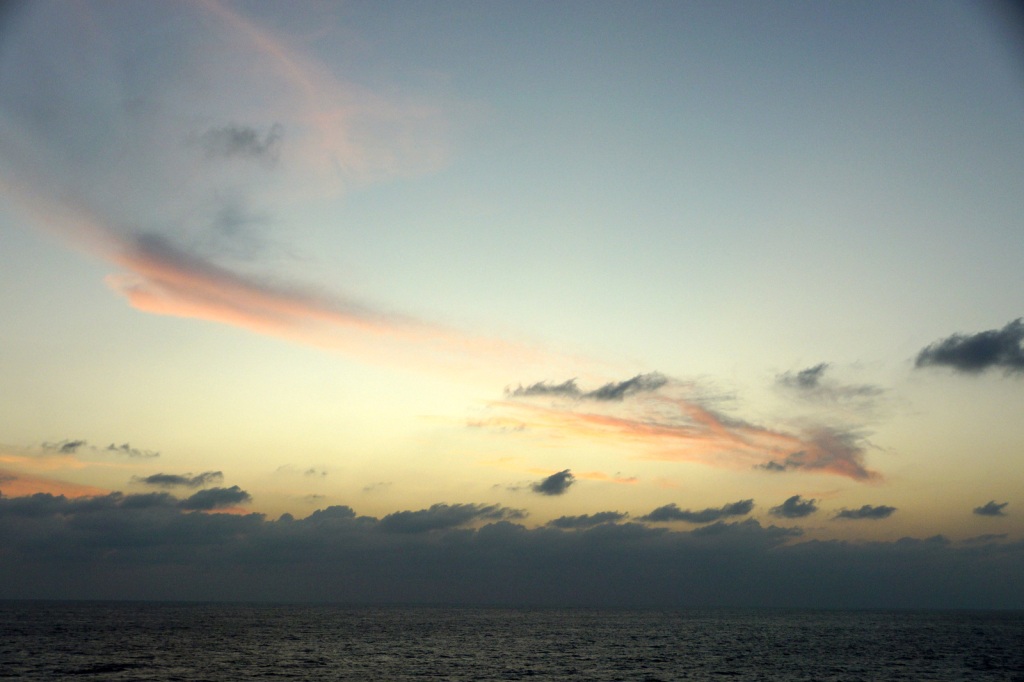
In the evening, we were sat with an ex-army officer at dinner who revealed that one place he was posted was Mozambique, which I found surprising. Apparently, Margaret Thatcher was, improbably, charmed by the Marxist guerrilla Samora Machel who was President of Mozambique and persuaded her to back him to ensure stability in southern Africa! So, the British Army send a detachment to work alongside the local forces. This explains why, in 1995, Mozambique became the first country to join the Commonwealth which was not a former British colony.
The next day was just a quiet. A small group of Striped Dolphins shot past the ship in the early morning. Then, a birdless day was averted only by the sight of a White Tern flying around in the ship’s light when I took a quick look out on the balcony after returning from dinner!
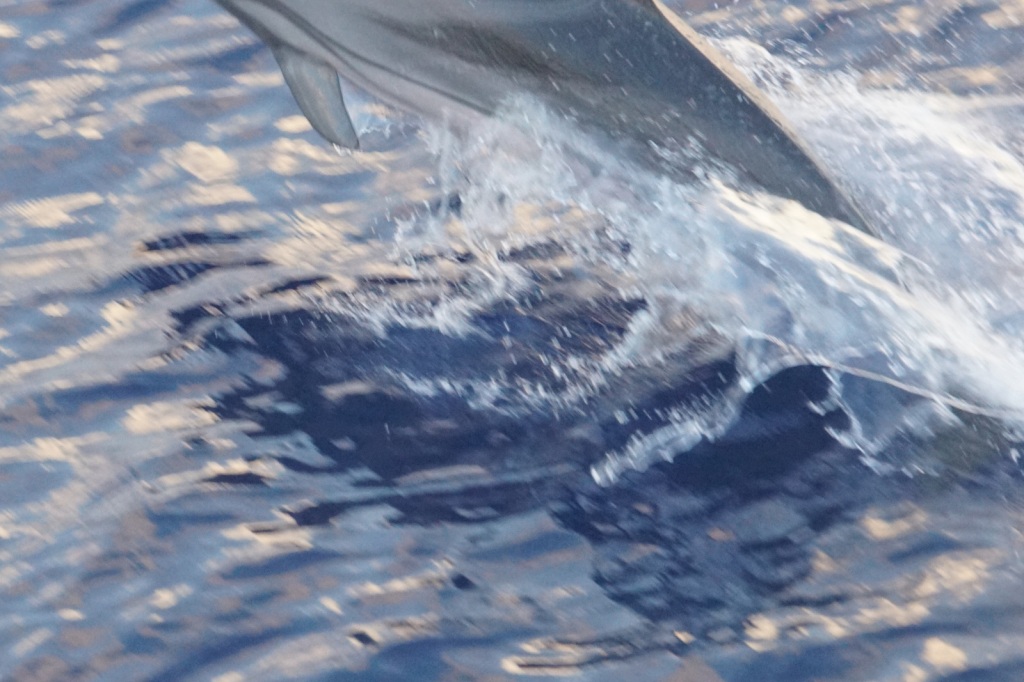
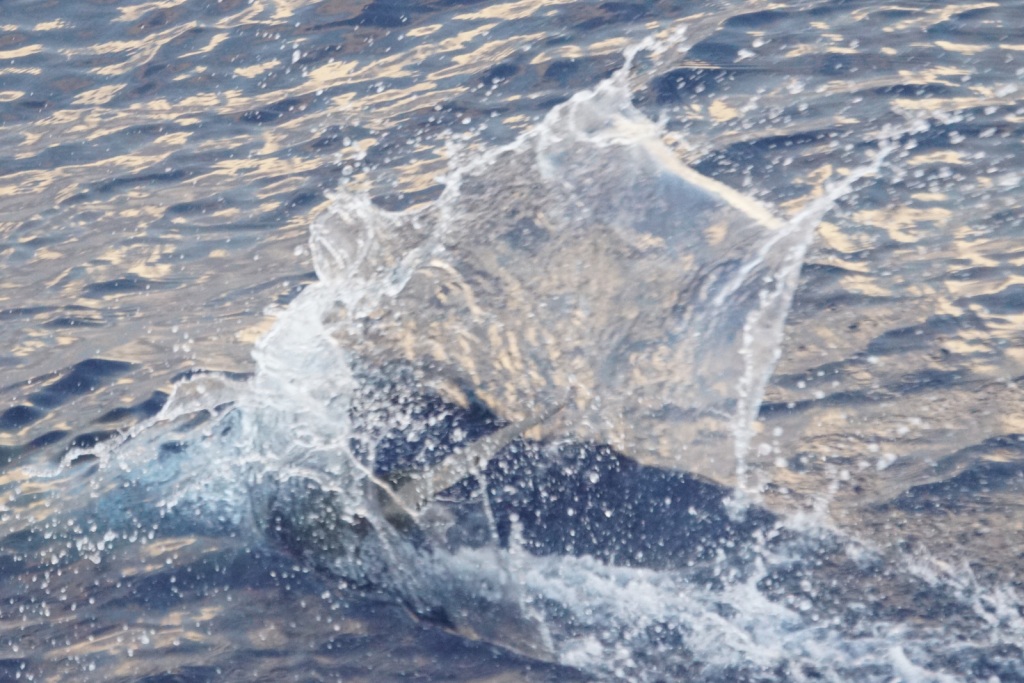
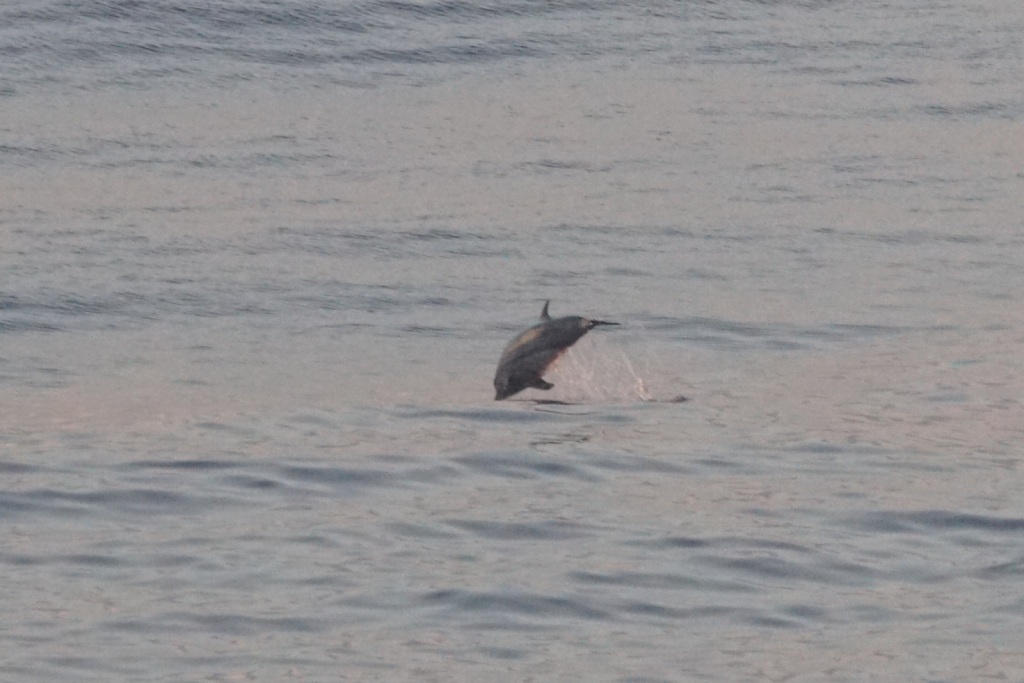
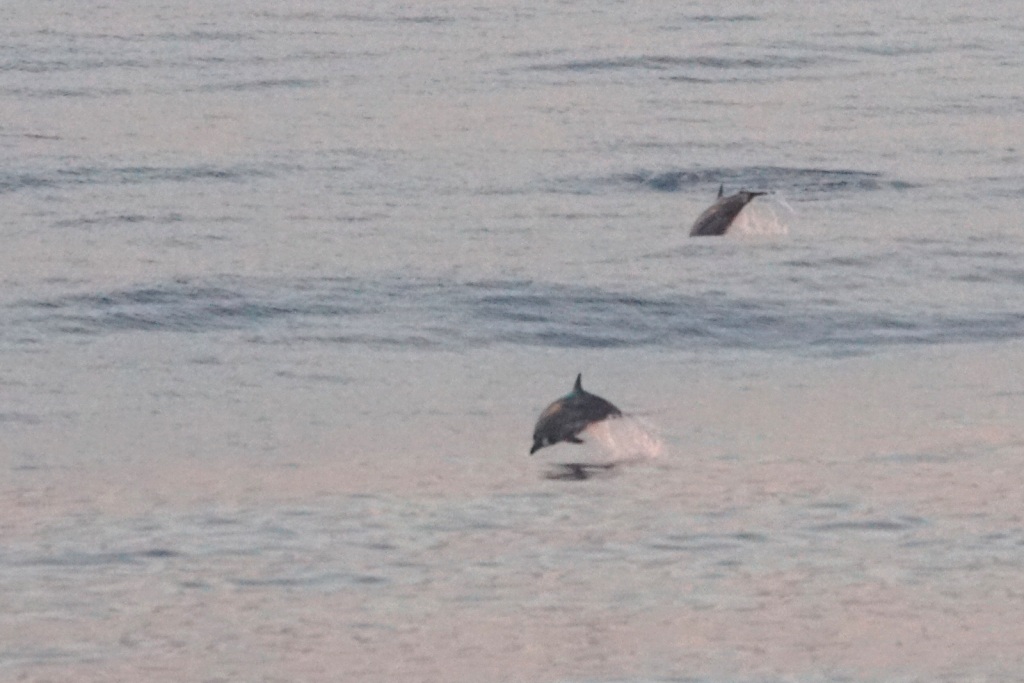
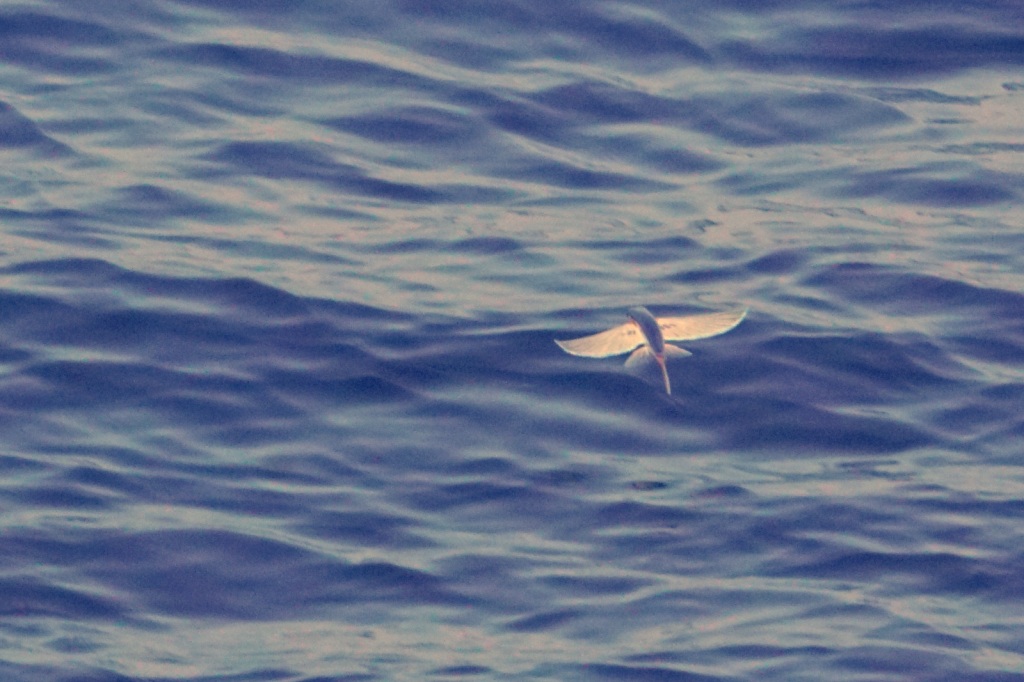
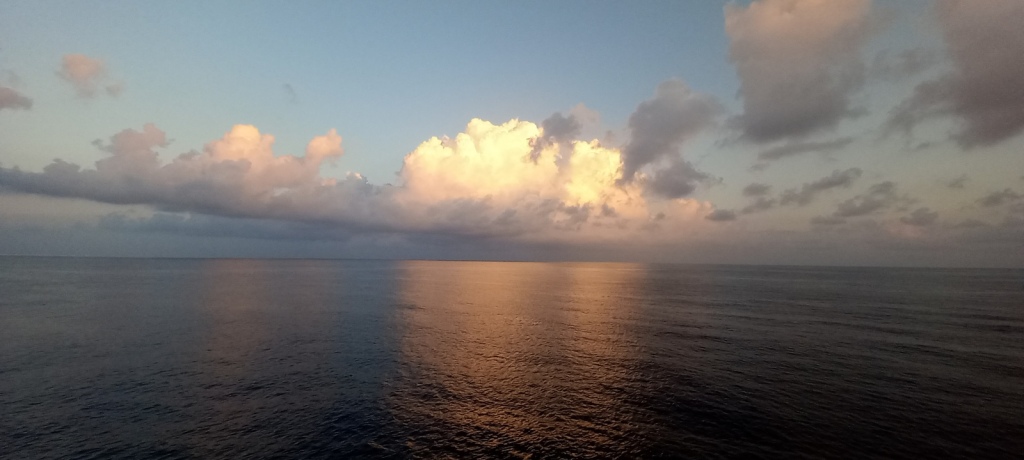
We crossed the equator during the night again, in the early hours of 21st March, appropriately enough, as it was the solstice. Again we sailed over without ceremony.
The next morning we were sailing over the Mid-Indian Basin. Our nearest land, now, was the Chagos Archipelago in what is known as British Indian Ocean Territory. There were some birds in the morning – a few Wedge-tailed Shearwaters and a single White-tailed Tropicbird which flew along with the boat for a few minutes. At mid-day we passed a fishing boat, flying the Indonesian flag, which was trawling and this meant some more birds, with a couple more Wedge-tailed Shearwaters and some Sooty Terns.
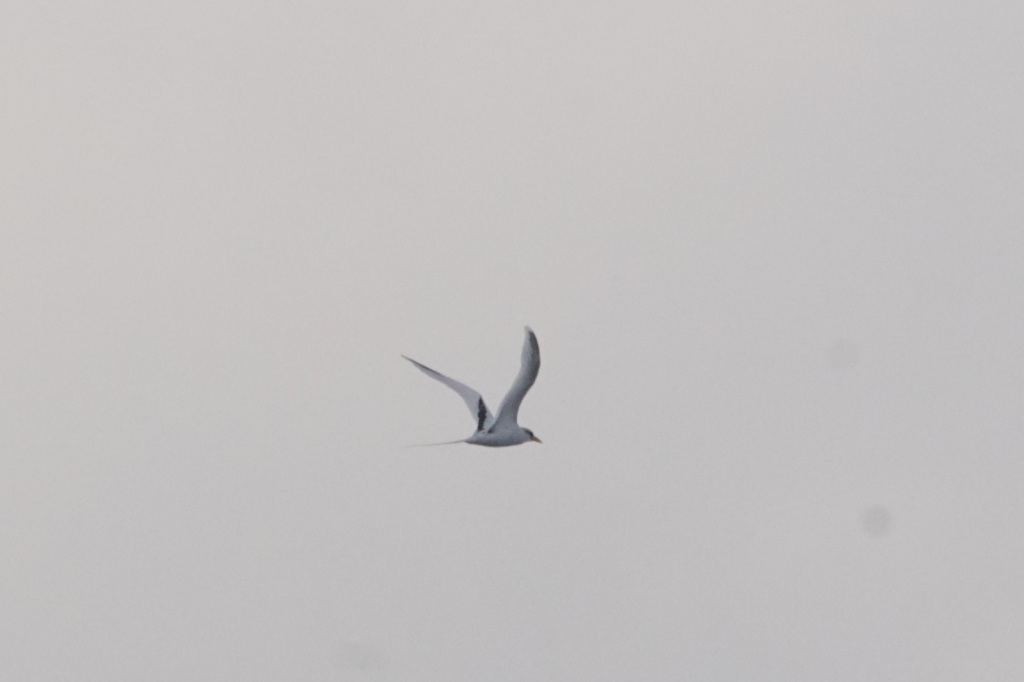
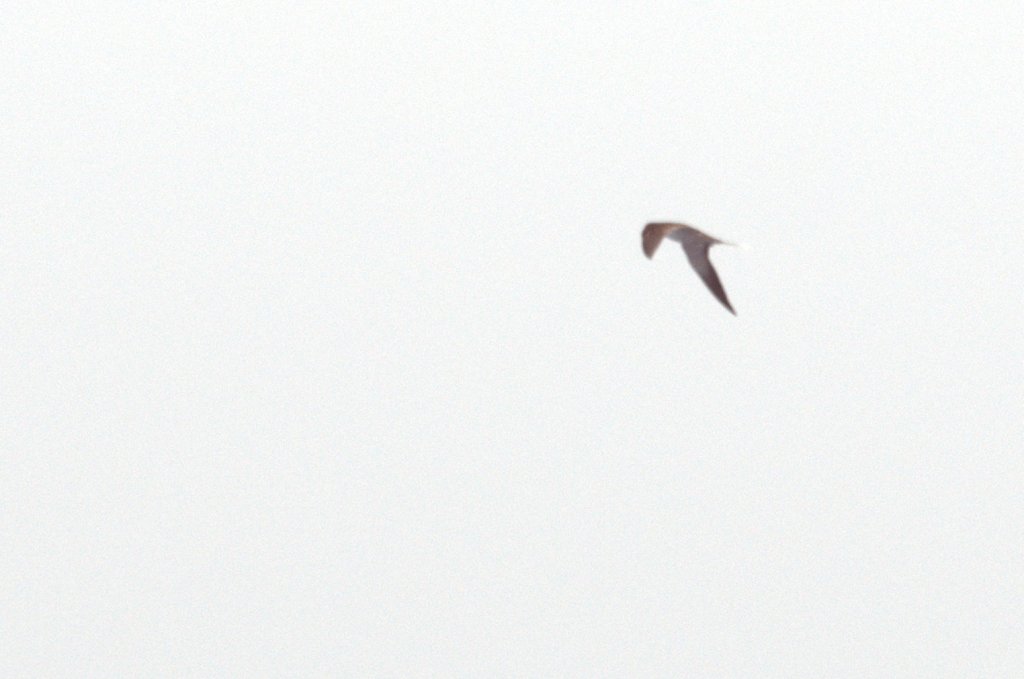
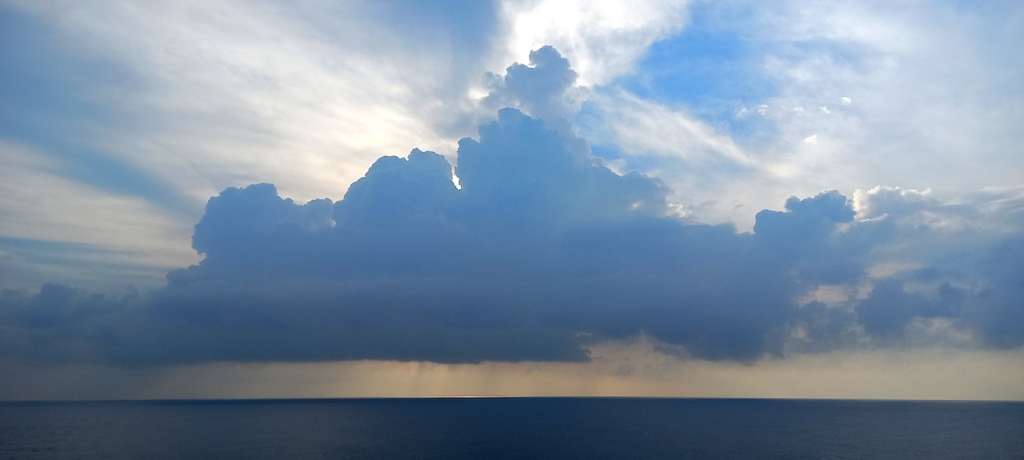
Friday 22nd March was, after a bright start, largely overcast with occasional showers. At lunchtime we passed a tiny vessel, probably no more than 5 m long. I only had my binoculars and couldn’t see if it was flying a flag. It must have been 400 miles from the nearest fishing village, which would be in the Maldives.
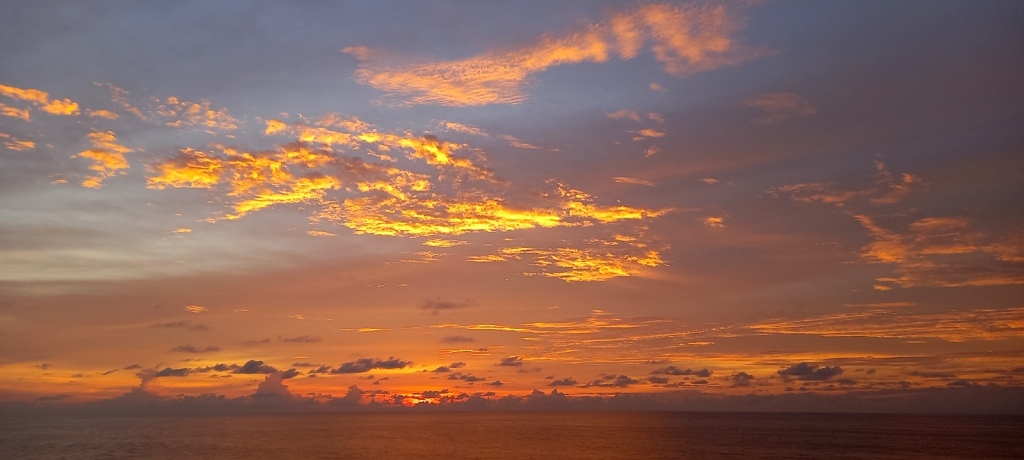
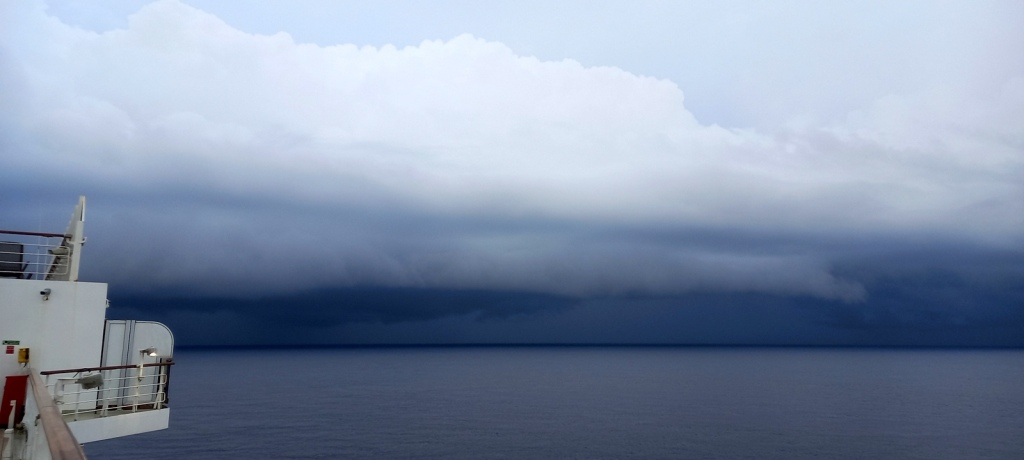
Soon afterwards we entered the EEZ of British Indian Ocean Territory (BIOT). Almost immediately we saw some birds – a few Red-footed Boobies and a Wedge-tailed Shearwater – but there were no more later.
BIOT is not Britain’s finest moment in history. It was formerly part of the Crown Colony of Mauritius but, in 1965, just as preparations began for Mauritian independence, BIOT, which consists solely of the Chagos Archipelago, was created as a separate entity. There is little reasonable doubt that this was done at the request of the US government, as soon afterwards a huge airbase and naval base began construction on the largest island, Diego Garcia. This airstrip, which is officially a joint US-UK base, can accommodate the US Air Force’s largest warplanes and gives the US air supremacy in the Indian Ocean.
When the base was being built, all the Chagos Islanders, even on islands over 100 miles from the base, were forcibly evacuated and most now live in Mauritius and the UK. the Chagossians have little recognition in Britain for their campaign, although Jeremy Corbyn has been a notable supporter of their aims. In 2019, the International Court of Justice issued a non-binding advisory opinion stating that the UK “… has an obligation to bring to an end its administration of the Chagos Archipelago as rapidly as possible … complete the decolonization of Mauritius”. In 2023, the UK government suggested that repatriation was part of discussions with Mauritius, but current Foreign Secretary David Cameron recently declared that resettlement was not possible.
As if this forcible removal of the residents was not bad enough, Diego Garcia has hosted up to 120 mainly Sri Lankan Tamil asylum seekers, some of whom have been there for almost three years after failing in an attempt to sail to Canada. The UK government argues that the UN conventions don’t apply in the territory and has done very little to help the refugees despite the United Nations refugee agency describing the UK-US military base, as “not a suitable location” to house them.
It is almost impossible to visit BIOT. Yachts crossing the Indian Ocean have the right of safe anchorage around some islands, but not those that have been declared as nature reserves and definitely not Diego Garcia. Otherwise, the only people let in and out of the islands are Mauritian fishermen and military personnel and civilian contractors going to Diego Garcia.
Geographically, the Chagos Archipelago is closer to the Maldives, as it is coralline in origin, not volcanic and it forms the southern outpost of the Chagos-Laccadive ridge, which includes the Maldives.
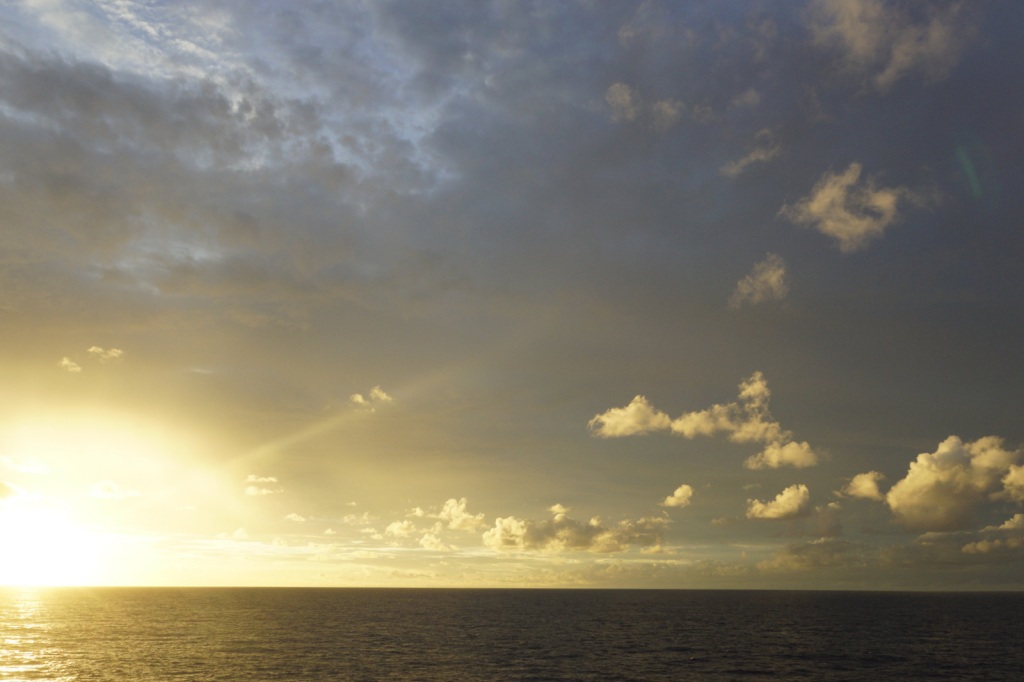
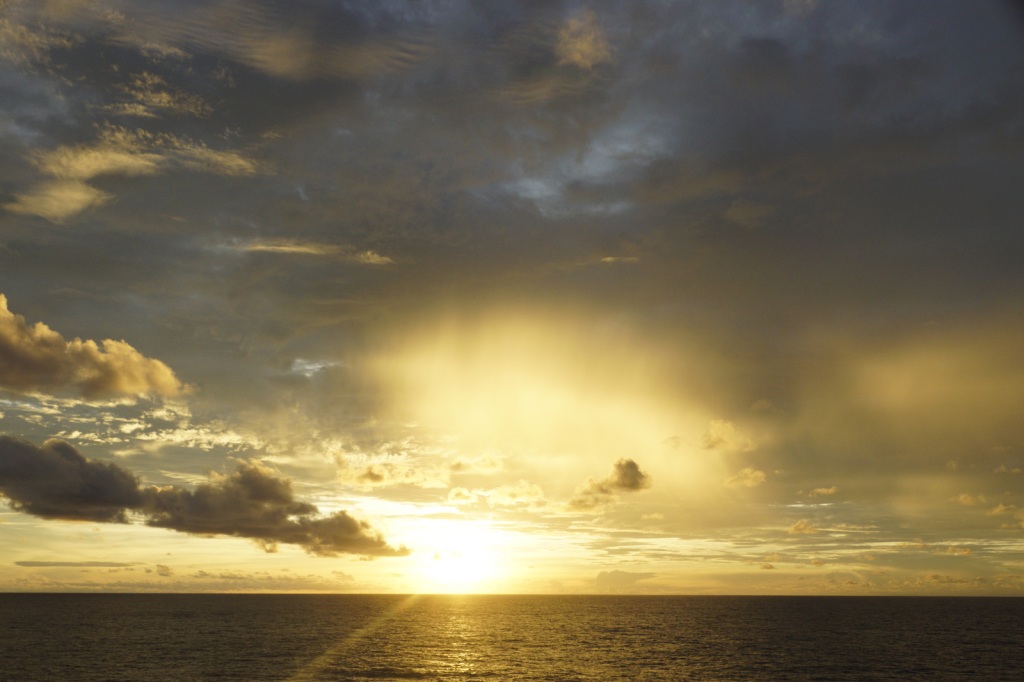
The next day, we were back in no-man’s waters, in international seas between the Chagos Archipelago and Mauritius. A Pomarine Skua was the first of the trip – they really do seem to turn up anywhere in the world’s oceans. A White-tailed Tropicbird was flushed from the sea in the afternoon. Otherwise, there were a few passing Red-footed Boobies (still not enough flying fish to bring them in) and a single Wedge-tailed Shearwater.
We entered official Mauritian waters on Sunday 24th March, to the east of an area of largely shifting sands and shoals known as St Brandon, and slightly further north of Rodrigues. There were birds, but most were frustratingly distant. An all dark petrel with silvery flashes on the underwing puzzled me for a while but eventually I concluded that it was a dark morph Trindade Petrel; the birds in the Indian Ocean breed on Round Island north of Mauritius and, although not even officially recognised as a subspecies, some authorities regard it as a separate species. There were also dozens of Sooty/Bridled Terns – the only three that approached close enough for identification in the morning were Bridled Terns but a flock in the afternoon were Sooty Terns. A distant White-tailed Tropicbird was seen in the afternoon, Wedge-tailed Shearwaters reappeared, male Lesser Frigatebird was seen and some distant Lesser Noddies flew past at the end of the day.
